Find Our Latest Video Reviews on YouTube!
If you want to stay on top of all of our video reviews of the latest tech, be sure to check out and subscribe to the Gear Live YouTube channel, hosted by Andru Edwards! It’s free!
Thursday December 9, 2010 4:57 pm
Dell Inspiron Duo review

A 10-inch slate tablet seemed imminent when news broke that Dell had an iPad rival on the way, but that turned out not to be the case. The 5-inch Dell Streak was their first attempt, but ended up being more smartphone than tablet. Its second attempt—the Dell Inspiron Duo ($549.99 direct)—isn't even close. Although it is a novel take on a netbook convertible tablet, it's anything but an iPad rival. It features a cleverly designed flip hinge that exposes (and conceals) a physical keyboard, and is one of the few netbook tablets that run on an Intel Atom processor and a full blown Windows 7 operating system. Although it sports one of the most innovative designs we've seen in a while, the Inspiron Duo is no threat as a touch device to any tablet and completely misses as a netbook.
Design
Dell's approach to tablet design should be applauded because it's simple, yet clever. Instead of a single hinge connecting the two halves, there are four hinges: Two side-mounted to the screen and two below the screen that open and close the lid. The side-mounted hinges allow the screen to flip vertically, which can't be appreciated until you try it out in person. The 10-inch screen snaps securely into place with each flip—clockwise (or toward you) to tablet mode and counter-clockwise (or away from you) to use as a netbook. And by securely, I mean you don't have to worry about a child spinning the screen like a rolodex.
The lid closes flush with the bottom half, which is a lot cleaner-looking than how the Lenovo IdeaPad S10-3t ($629 direct, 3.5 stars) does it. Aesthetically, the Duo is more attractive than many of its netbook counterparts. The lid is akin to a picture frame: The borders are made of a rubbery-looking plastic, which is colored in "FastBack Red" (there are two other color options: blue and black); the picture, in this case, is the flipping screen itself, which is backed by a glossier shade of the same color. Gun-metal gray aluminum HP Mini 5103 ($567, 4 stars) blankets the interior.
At 3 pounds, the Inspiron Duo is slightly heavier than the Lenovo S10-3t (2.8 lbs)—though both come with a small battery (4-cell). By contrast, the HP 5103 (2.9 lbs) and Asus EeePC 1015PEM (2.9 lbs) bundle 6-cell batteries and weigh about the same. Because the Duo is a netbook first and married to a physical keyboard, it's twice as heavy as the Apple iPad (1.5 lbs)—a slate tablet.
The 10-inch screen is exceptional because it uses a 1,366-by-768 resolution, instead of the boilerplate 1,024-by-600 found in the Asus 1015PEM and Acer Aspire AO255-1203 ($329.99 street, 4 stars). A glass layer is applied over the entire screen, similar to the iPad's—an aesthetic touch, accompanied by some glare. Even though the keyboard is slightly undersized (95% full size), it didn't seem small as I typed up this review on it. It's very similar to the keyboard found in the Samsung NF310-A01 ($399.99 street, 4.5 stars), our Editors' Choice for netbooks. If you want a full-size keyboard on a netbook, check out the the Toshiba mini NB305-N410 ($320 street, 4.5 stars) and Acer AOD255-1203. The smaller keyboard, however, is tempered by an outstanding touchpad and mouse button experience, which you'll be using a lot more than the touch aspect.

Features
The Duo's user experience takes a turn for the worse when it's in tablet mode. It uses Windows 7 Home Premium's touch software, which, compared with Google's Android and Apple's iOS 4, is in dire need of an update. Simple things we take for granted, like tapping a picture or a Word document to fit the screen or touching an icon and expecting an immediate response, are absent in Windows 7. Microsoft doesn't provide a usable virtual keyboard and neither did Dell, so entering something as simple as a Web site's URL can be maddening at times. Changing the orientation of the screen (from landscape to portrait and vice versa) is followed by a long screen flicker, which is unheard of in devices like the iPad and the Samsung Galaxy Tab. On the positive side, having a full blown operating system means that you can run all your favorite applications without going through an app store.
There are two reasons behind the flaws in the Duo's touch interface, the first of which is the software load. The system is cluttered with third-party and proprietary applications that add unnecessary strain. You're almost better off reinstalling Windows 7 Home Premium from scratch. The other problem is that the hardware components aren't robust enough to run a full blown operating system like Windows 7 Home Premium, which is why most netbooks default to Windows 7 Starter, which does away with the visual eye-candy and advanced networking features, among other things.
The feature set can only be described as bare-bones. Most netbooks includes a media card reader of some sort, video-out (HDMI, VGA, or both), Ethernet, and at least three USB ports. Two USB ports and an audio jack are all you get with the Inspiron Duo. I suppose omitting as many ports as possible was done for aesthetic reasons, as it is they are concealed behind a port cover. A cleaner look was certainly achieved, but at the expense of some useful functionality. Wi-Fi is your only means of an Internet connection, unless you tether something to the USB port (3G modem or Ethernet adapter). A 320GB 7,200rpm hard drive is a faster spinning variant than the 5400rpm drives found in the Acer AOD255-1203, Asus 1015PEM, and Samsung NF310, but it didn't help performance much.
To get the features Dell left out of the Duo, you need to buy the JBL Docking Station, a $100 option that's exclusive to the Duo. While docked, the tablet can double as an alarm clock or digital photo frame, which seems more gimmicky than useful (the iPad can also function as a digital photo frame, but doesn't need a $100 dock to do so). It's a nice speaker dock that pumped out good sound, but the ports in the back—the card reader, two USB ports, Ethernet, and headphone jack—can only be used in tablet mode. So you'll need to attach an external keyboard and mouse to it if you want to get any real work done.
Performance
The Inspiron Duo wouldn't be a netbook tablet without the Intel Atom processor. Despite running the latest dual core version—the Atom N550—and 2GB of DDR3 memory (when most of its peers default to 1GB), they were still no match for Windows 7 Home Premium and the software "overload." Launching applications were at times gruelingly sluggish, although navigating through their menus once you're in them was fine. With a full bar reception, loading complex Web pages was slow, and watching 400 thumbnails load in the My Pictures folder can be brutal at times. Its Cinebench R11.5 score (0.46) finished slightly behind the NF310 (0.48) and the EeePC 1015PEM (0.48), and although SYSMark 2007 results were in line with its peers, my own experience with performance was anything but par for the course.
Battery life is easily the Duo's weakest link and the ultimate price paid for its good looks. There was enough room for a 30WH battery, which is equivalent to the 4-cell battery found in the Lenovo S10-3t. By comparison, the NF310-A01, the 1015PEM, and the AOD255 come standard with 6-cell batteries that lasted between 7 to 8 hours, according to MobileMark 2007 tests. Lasting just 3 hours, 18 minutes, the Duo is clearly not efficient enough as a road device. At least with the S10-3t (3:39), which didn't score that much better, you can buy an additional battery to take with you; the Duo's is non-removable.
That said, I'm not writing off this netbook tablet yet. The flip screen is an original and refreshing take on the convertible tablet, breathing new life into a category that is includes the Apple iPad and the score of slates due out next year. A netbook convertible tablet is a rare commodity these days, as the Duo and the Lenovo IdeaPad S10-3t are among the very few available in the United States. I've received e-mails from chefs, musicians, and artists asking about a $500 convertible tablet that run Windows and until now there wasn't much I could point them to. I'm eager to see what Dell has in store for a follow-up, and hope that similar designs will come from other manufacturers. The Inspiron Duo can satisfy a small niche of users, as long as they understand its many limitations. In the meantime, the Lenovo IdeaPad S10-3t is the better pick because it comes with more features and a removable battery. The HP Mini 5103 has an option for a touchscreen that doesn't flip or swivel and the Samsung NF310-A01 remains our top pick for netbooks.




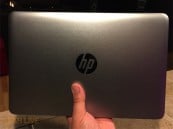
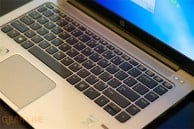
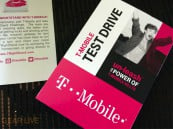
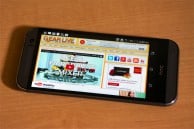
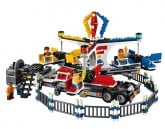
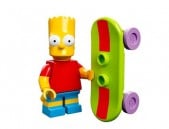
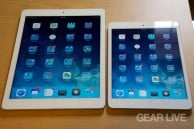
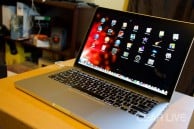
Forum Discussion
Come join the discussion on this topic over on the Gear Live message boards. You need to be a member to participate, so sign up if you haven't already - it's free!